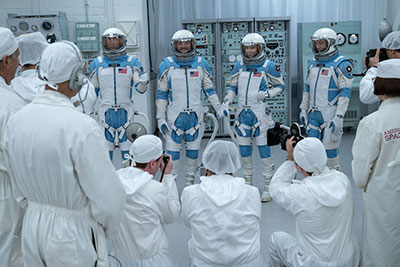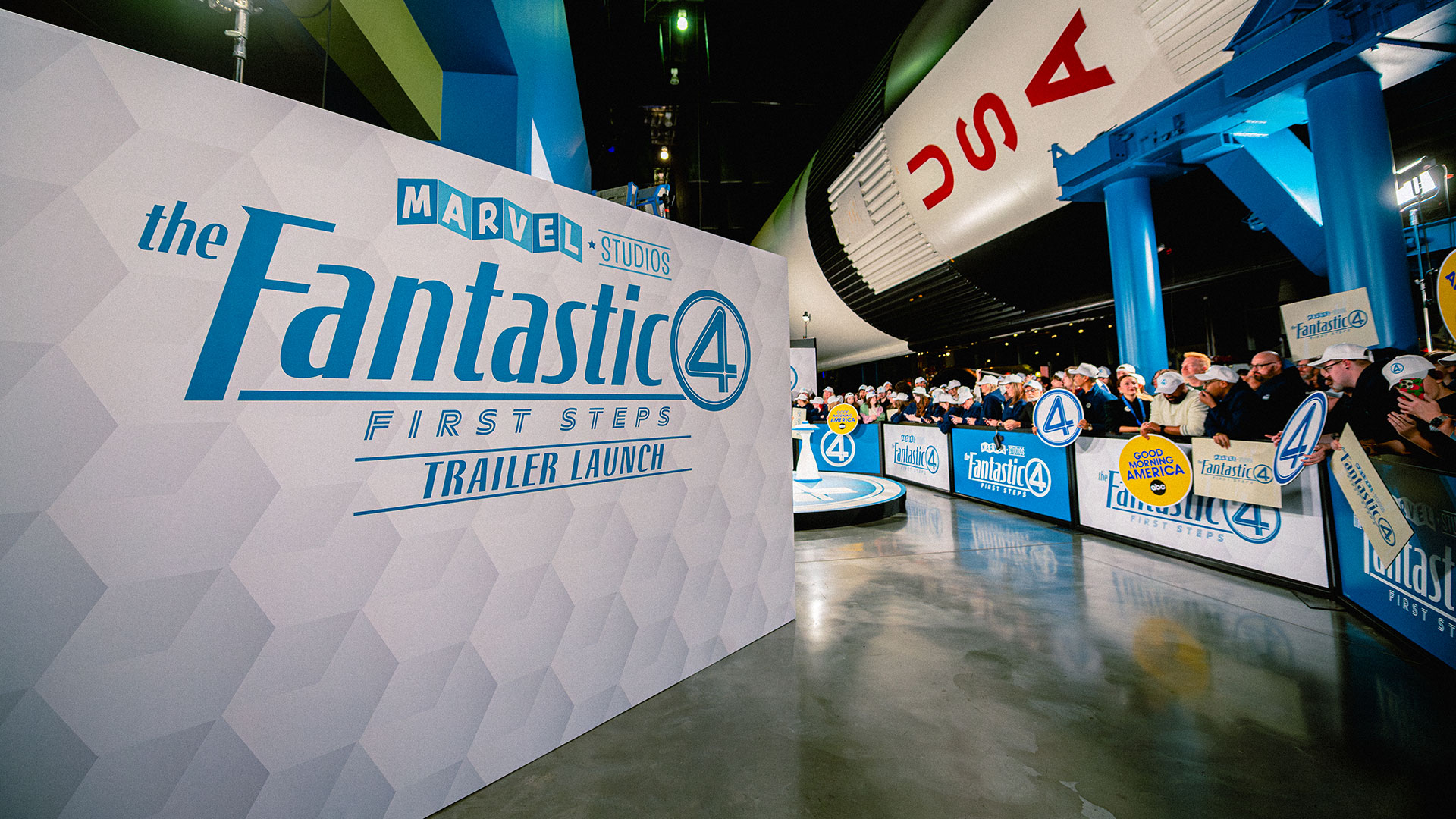ExcelsiorResearch into 1960s-era space technology, particularly the Apollo missions, influenced the design of consoles and instruments on set. Inspiration was drawn from sci-fi films, embracing a highly stylized vision of space travel and exploration. NASA astronaut Rick Mastracchio consulted on the smaller details of the spacecraft, such as Velcro tabs for securing equipment, fabric loops for attaching tethers, and handrails for movement in zero gravity. Additionally, consoles were positioned higher than usual to accommodate characters floating in space. The design also drew from the aesthetic seen in Reed's lab and the Fantasticar, providing a cohesive visual language across sets and vehicles.
The color palette for the Excelsior is minimalistic, inspired by real spacecraft, such as the Apollo missions and modern vessels like the ISS and space shuttle Atlantis. The base color is light gray, accented by a blue band that mirrors the hue used in Reed's lab. The metallic gray used on the structural buttresses in the navigation bay evokes the appearance of milled metal, reinforcing the ship's superstructure.
Fabric elements were incorporated around the main windows and edges to echo those seen on real spacecraft. Soft storage areas, inspired by those on the ISS and shuttles, provide a place for crew belongings. The set's glossy walls and floors reflect light, creating a dynamic interplay with the LEDs, the screens and the lighting from outside.
Suiting Up

The rudimentary design of their suits in the film's first visit to space helped introduce this world of space travel. "It feels like they're going on a real adventure," says costume designer Alexandra Byrne. "We looked at early Gemini and Mercury space suits from NASA as our reference and used those as the foundation for designing our early Air Force suits."
For the more up-to-date EVA suits worn during their second adventure in space, Byrne was able to increase the retro-futuristic vibe by adding a bit of Reed's technology to make them look more advanced than what would have been possible, but not so futuristic that they felt too modern or sci-fi.













